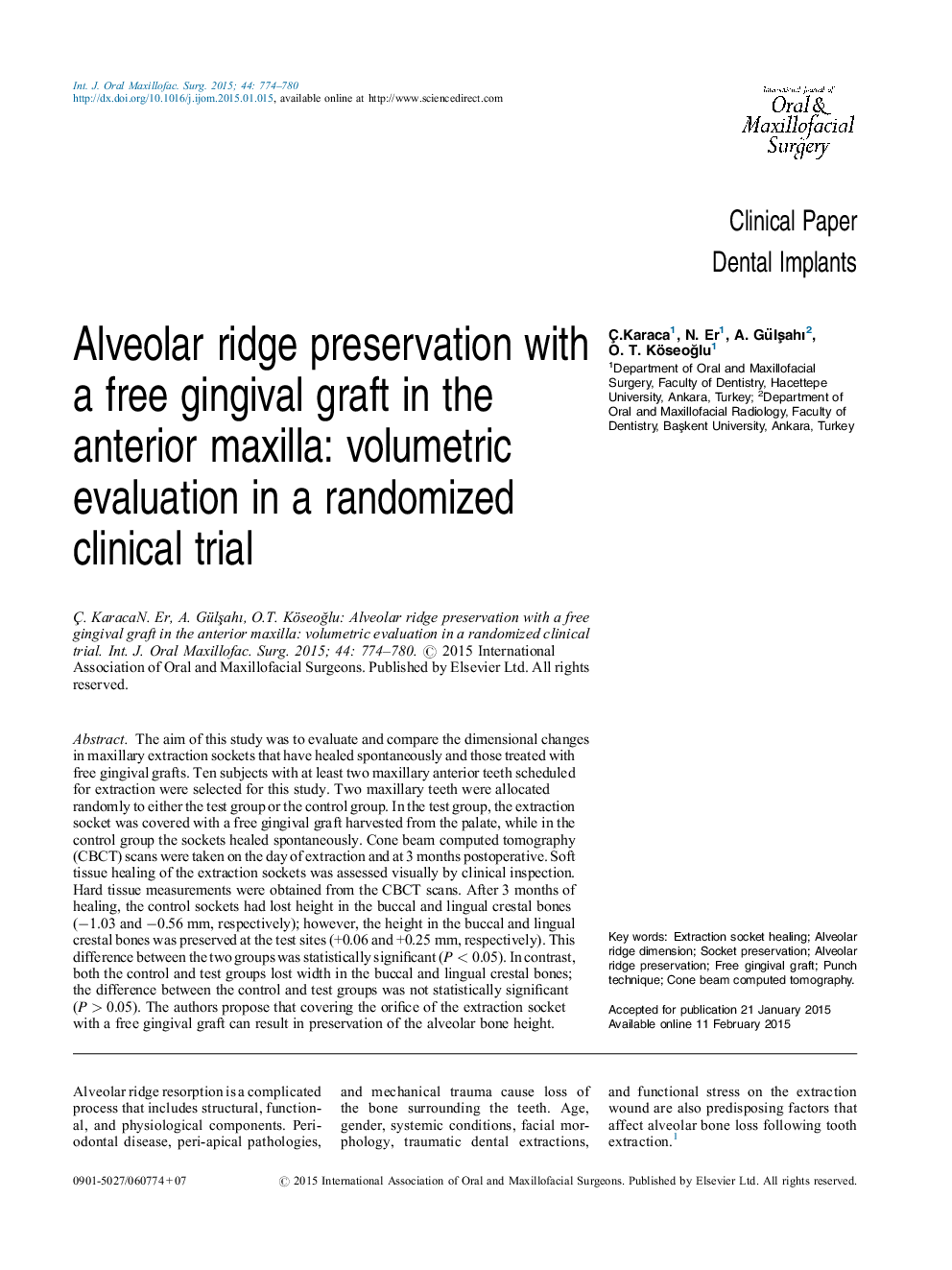| Article ID | Journal | Published Year | Pages | File Type |
|---|---|---|---|---|
| 3131920 | International Journal of Oral and Maxillofacial Surgery | 2015 | 7 Pages |
The aim of this study was to evaluate and compare the dimensional changes in maxillary extraction sockets that have healed spontaneously and those treated with free gingival grafts. Ten subjects with at least two maxillary anterior teeth scheduled for extraction were selected for this study. Two maxillary teeth were allocated randomly to either the test group or the control group. In the test group, the extraction socket was covered with a free gingival graft harvested from the palate, while in the control group the sockets healed spontaneously. Cone beam computed tomography (CBCT) scans were taken on the day of extraction and at 3 months postoperative. Soft tissue healing of the extraction sockets was assessed visually by clinical inspection. Hard tissue measurements were obtained from the CBCT scans. After 3 months of healing, the control sockets had lost height in the buccal and lingual crestal bones (−1.03 and −0.56 mm, respectively); however, the height in the buccal and lingual crestal bones was preserved at the test sites (+0.06 and +0.25 mm, respectively). This difference between the two groups was statistically significant (P < 0.05). In contrast, both the control and test groups lost width in the buccal and lingual crestal bones; the difference between the control and test groups was not statistically significant (P > 0.05). The authors propose that covering the orifice of the extraction socket with a free gingival graft can result in preservation of the alveolar bone height.
